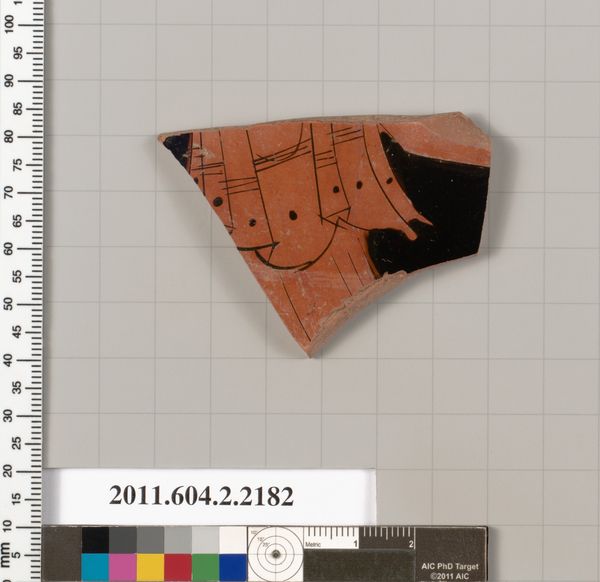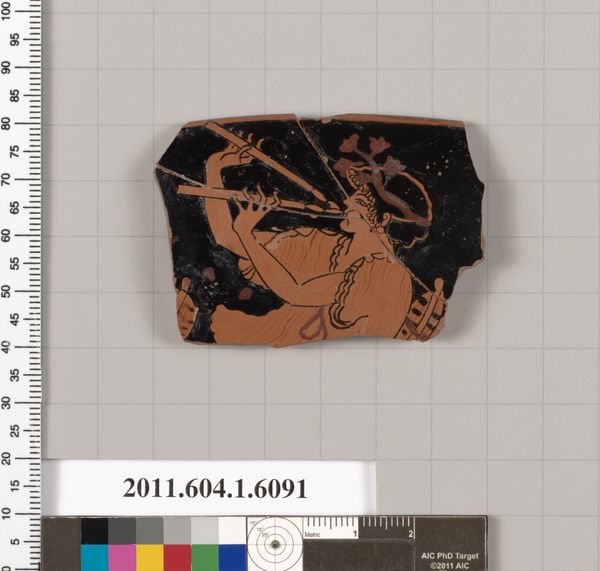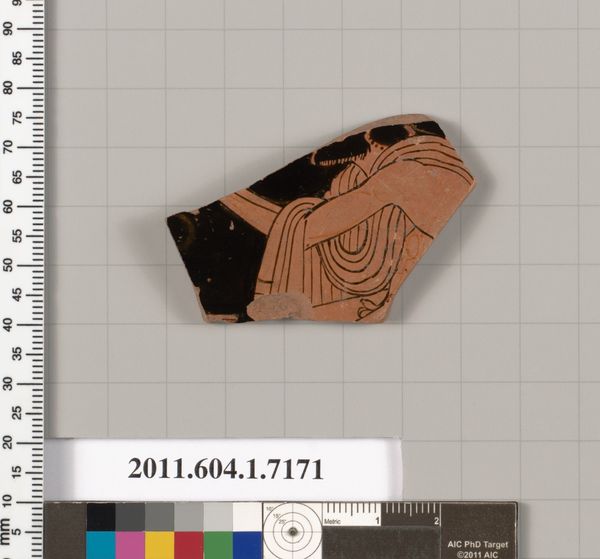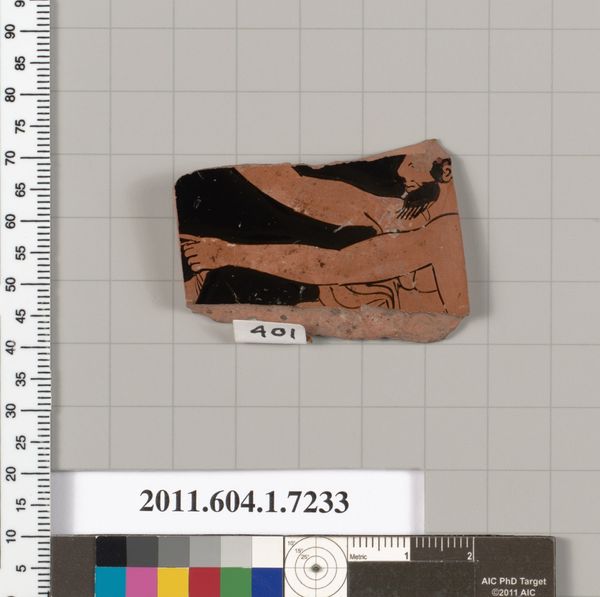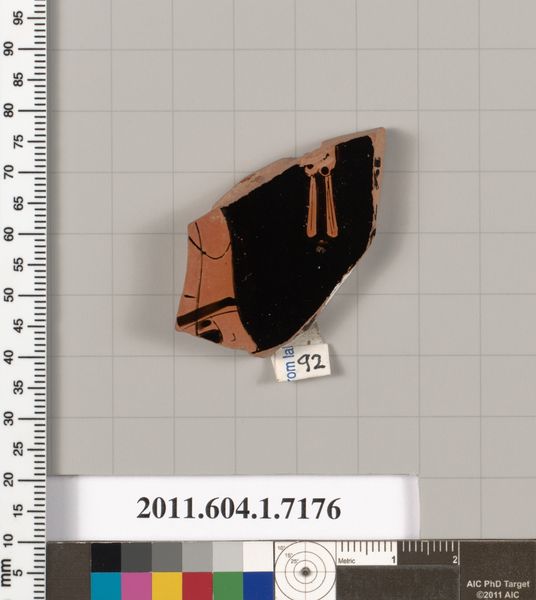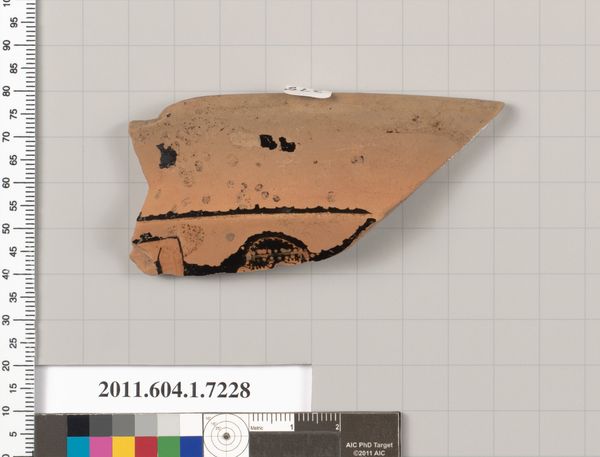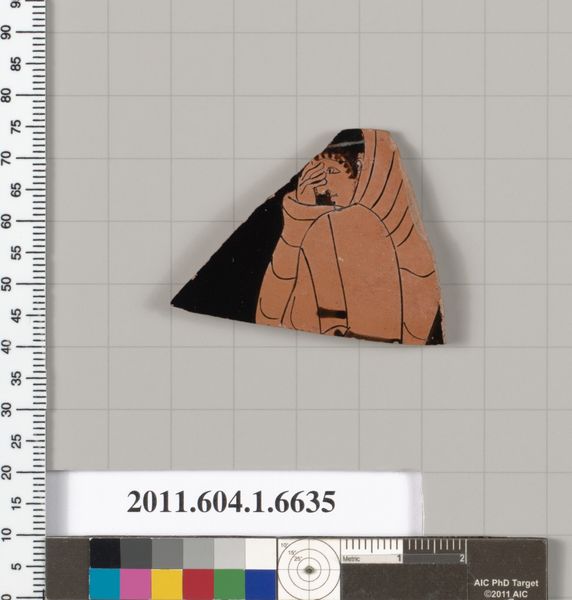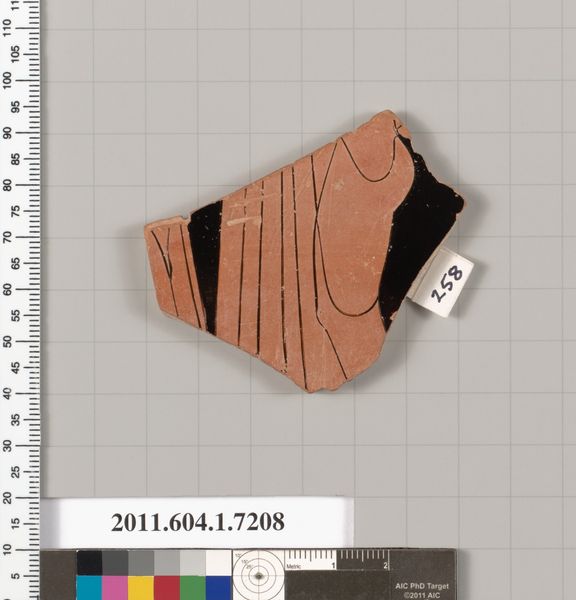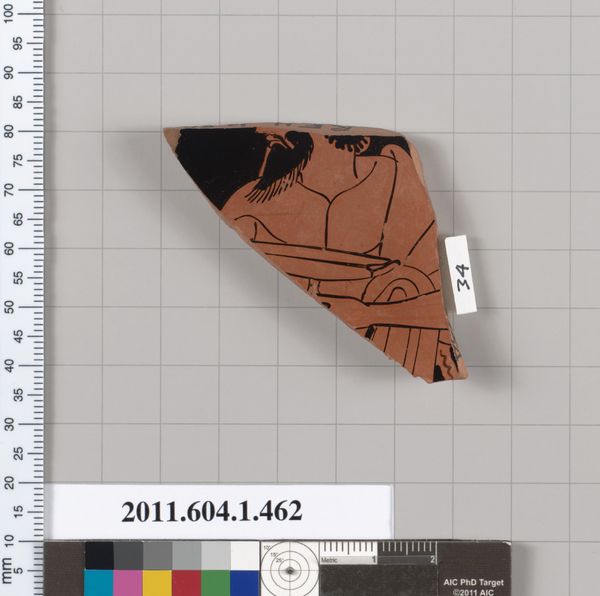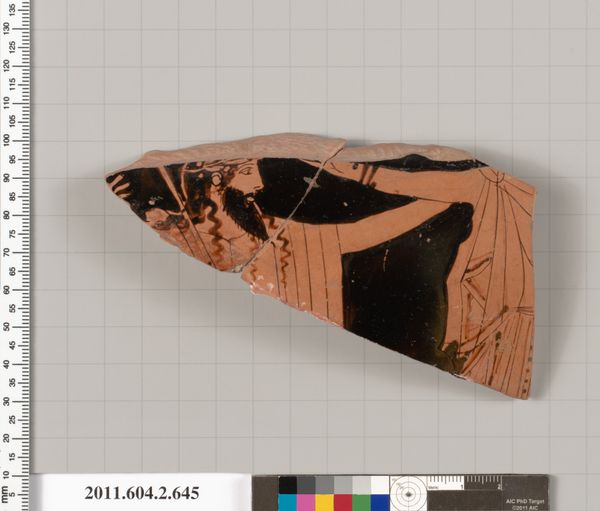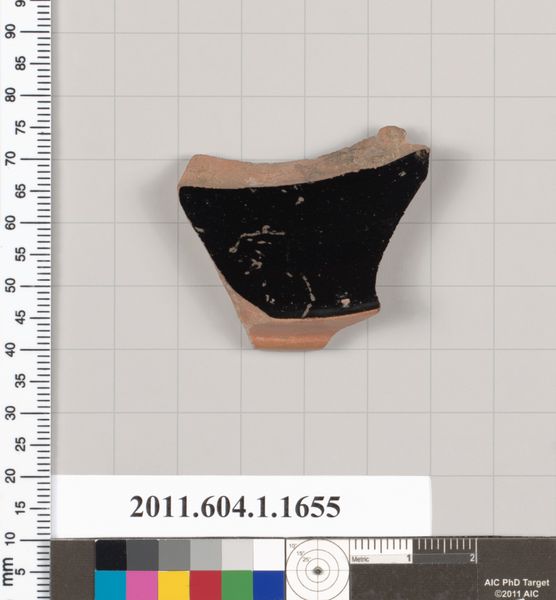
ceramic
#
greek-and-roman-art
#
ceramic
#
vase
#
figuration
#
geometric
#
ancient-mediterranean
Copyright: Public Domain
Editor: This terracotta fragment of a kylix, or drinking cup, by Makron, dates back to 530 BC. It's on display here at the Met. Looking at it, I am struck by the contrast between the black glaze and the reddish terracotta. What formal qualities do you see that are most compelling? Curator: The visual weight, certainly. Observe how the artist employs positive and negative space to construct form. The tension arises from the contrast, but note also the economy of line used to describe the human form. How do you think this treatment of the body contributes to its narrative impact? Editor: I see the clear outlines of the body against the black ground, giving a sharp silhouette, a kind of… energy. But can you tell me more about this silhouette technique? Curator: In Attic vase painting, such a focus on contour emphasizes form rather than volume. This emphasizes line, pattern, and ultimately, surface articulation. In this sense, the human figure becomes less about portraying reality and more a design element that harmonizes with the vessel’s shape. Do you notice how the curve of the painted figure might mirror that of the drinking cup? Editor: I do! So, it's the formal relationship, the echoing shapes that speak more than the specific narrative of the painted image? Curator: Precisely! Through a study of its compositional components—the use of contrast, line, and shape—the fragment presents an exercise in abstract visual language. Editor: This fragment now reveals its hidden elegance. Thanks for helping me look beyond just the surface of the design.
Comments
No comments
Be the first to comment and join the conversation on the ultimate creative platform.
